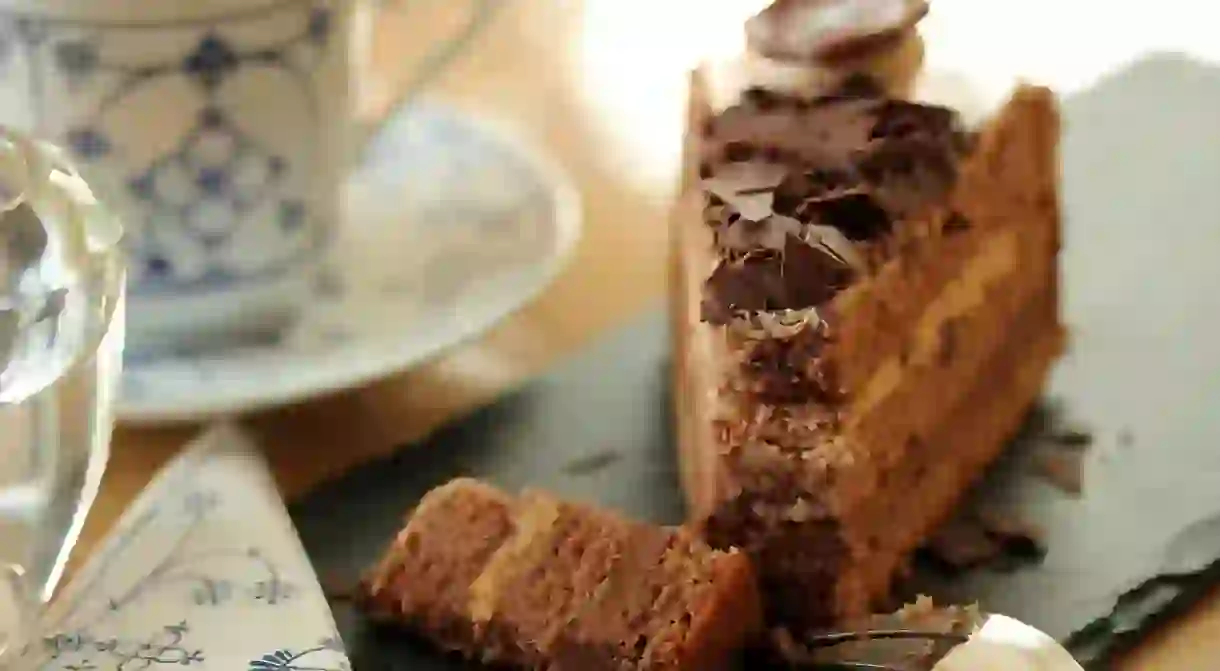The Best Russian Desserts to Try

For many, traditional Russian meals are associated with borsch and other soups, pancakes, porridge, local dumplings and potatoes. However, few realise that there are countless traditional Russian desserts, too, from grandma’s homemade jams and pancakes, to authentic cakes, sweets and even handmade chocolates. When it comes to sugary confections, locals have a sweet tooth, and if you’re invited to a friend’s house in Moscow, chances are they will offer hot tea with something sweet. Discover more about the best Russian desserts.
Alenka Chocolate
Alenka chocolate might not be the tastiest Russia has to offer, but it’s undoubtedly the most famous. Red October Chocolate factory began producing the bar in 1965 as a result of a special food program implemented to mass-produce affordable milk chocolate for children. At the time, the company held a competition for the packaging design and made an advert in a local newspaper. The winner was a drawing of an eight-month-old girl, submitted by an artist who worked at the factory. Later, there were rumours that the girl was Svetlana Allilueva, Stalin’s daughter.
https://www.instagram.com/p/4YTb7IMD0k/?taken-by=shokolad.alenka
Ptichie Moloko – Bird’s Milk Cake
This cake is considered among the best traditional Russian sweets and looks like a thick slice of marshmallow covered in chocolate. It was the first cake to be patented in Soviet times. The official recipe was developed by a group of confectioners and is derived from French marshmallows but with several important changes. This dessert remains very popular in Russia.
https://www.instagram.com/p/BbiH1bShScm/?tagged=%D0%BF%D1%82%D0%B8%D1%87%D1%8C%D0%B5%D0%BC%D0%BE%D0%BB%D0%BE%D0%BA%D0%BE
Prague Cake
This Russian variation of the Austrian Sacher cake has just a little bit in common with the Czech capital. Legendary Russian pastry chef Vladimir Guralnik developed the recipe. He learned the art of patisserie from Czech master confectioners who made regular trips to Moscow. This cake usually consists of four different types of cream, some laced with brandy and other liquors, and the pastry layer is soaked in rum. The original Viennese cake does not contain any cream at all.
https://www.instagram.com/p/BbORKigFNHZ/?tagged=%D1%82%D0%BE%D1%80%D1%82%D0%BF%D1%80%D0%B0%D0%B3%D0%B0
Vatrushka Pie
The world of Russian pastry would not be same without the vatrushka, a round bun made from leavened, short or unleavened dough. This recipe has remained mostly the same for thousands of years. The soft vatrushka bun is complemented with baked cottage cheese, sugar, jam, milk or fruit puree. It’s a humble treat, but they’re in high demand. However, you’re more likely to find them at a local bakery than in contemporary patisseries.
https://www.instagram.com/p/BZnjdpFhuMd/?tagged=%D0%B2%D0%B0%D1%82%D1%80%D1%83%D1%88%D0%BA%D0%B8
Baked Russian Apples
Most of Russia is very cold, and because of the brief summer, fruit is scarce. Traditional Russian apples tend to be sour, but inventive Russian cooks have found ways to make them sweet. Firstly, the apples are soaked in various syrups, and then the core is cut out. The apple is then stuffed with a sweet filling, and finally, it’s baked. This is probably one of the healthier treats in the Russian confectionary world.
https://www.instagram.com/p/BaQrf8ygO7Q/?tagged=%D0%BF%D0%B5%D1%87%D0%B5%D0%BD%D0%BE%D0%B5%D1%8F%D0%B1%D0%BB%D0%BE%D0%BA%D0%BE
Tula Pryanik – Gingerbread
Known as “honey bread” or “spicy bread”, pryanik dates back as far as ancient Egyptians. The recipe appeared in Russia around the 9th century, and at the time, gingerbread was baked from rye flour mixed with honey and berry juices. The word pryanik comes from the Russian word pryanost, which means “spices”. As Indian and Middle Eastern spices became more prevalent in Russia, the honey bread recipe was altered to include cinnamon, cardamom and many other spices. The Russian city Tula is famous for its gingerbread production. Distinctive in taste and appearance, the pryanik is traditionally filled with jam or sweetened Russian milk. It became so popular that the government opened an entire museum in Tula dedicated to the history of this dessert.
https://www.instagram.com/p/Bbe72cdlQZh/?taken-by=tulacakes













